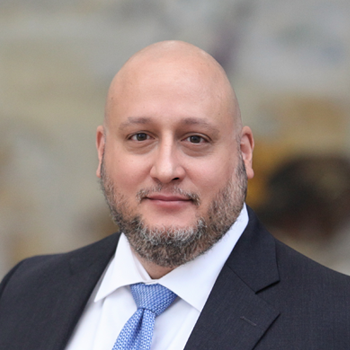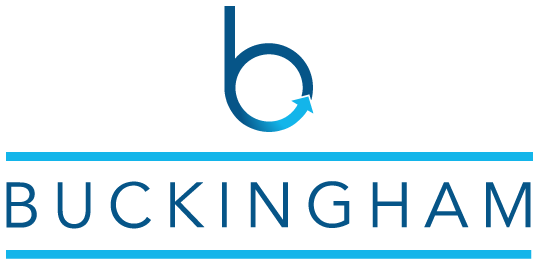By Dominic A. Frisina
Can an employee’s unpatentable “idea”, conceived under a duty to assign intellectual property, give rise to co-ownership in an invention conceived after employment terminates? That was the question on appeal in Bio-Rad Laboratories, Inc. v. International Trade Commission.[1] The answer to the question made Bio-Rad an infringer of patents that it believed it co-owned.

To understand how Bio-Rad found itself in this situation, a brief history is necessary. Dr. Hindson was co-founder and employee of QuantaLife, Inc. His company made bioanalytical tools for gene sequencing among other things. While employed by QuantaLife, Dr. Hindson and a Dr. Saxonov signed an agreement that provided:
(a) Employee agrees to disclose promptly to the Company the full details of any and all ideas, processes, recipes, trademarks and service marks, works, inventions, discoveries, marketing and business ideas, and improvements or enhancements to any of the foregoing (“IP”), that Employee conceives, develops or creates alone or with the aid of others during the term of Employee’s employment with the Company …
(b) Employee shall assign to the Company, without further consideration, Employee’s entire right to any IP described in the preceding subsection, which shall be the sole and exclusive property of the Company whether or not patentable.[2]
During their brief time as Bio-Rad employees Drs. Hinson and Saxonov also signed an agreement that provides:
All inventions (including new contributions, improvements, designs, developments, ideas, discoveries, copyrightable material, or trade secrets) which I may solely or jointly conceive, develop or reduce to practice during the period of my employment by Bio-Rad shall be assigned to Bio-Rad. [3]
Hinson and Saxonov soon left Bio-Rad, forming a new company, 10X, in July 2012.[4]In January of 2013 Hinson et al. conceived of a new analytical architecture relying on Gel Bead Emulsion technology, which was a significant departure from their work at Bio-Rad. 10X received three patents to this technology, which 10X accused Bio-Rad of infringing by selling its ddSEQ™ system.[5] Bio-Rad relied unsuccessfully on an affirmative defense that it was co-owner of the 10X patents under the agreements signed by Hinson and Saxonov. Bio-Rad’s reasoning was that Hinson and Saxonov had conceived of ideas embodied in the asserted patents while employed by Bio-Rad (or its predecessor QuantaLife).[6] According to Bio-Rad, since the agreements with Hindson and Saxonov included assignments of “ideas”, Bio-Rad owned the disclosed ideas that contributed to the asserted patents, making Bio-Rad a co-owner. If true, Bio-Rad cannot be an infringer of patents that it co-owns.[7] Unfortunately for Bio-Rad, the agreements have limitations that precluded it from being a co-inventor.
The court pointed out that the agreements plainly cover “intellectual property” which is more limited than an “idea”.[8] Not every idea is intellectual property. Intellectual property is an exclusive right. In order to be intellectual property an idea must be protectable as a recognized form of intellectual property such as a patent, trademark, trade secret, or copyright.[9]Hindson and Saxonov’s ideas, as disclosed to Bio-Rad, were too general to support patent rights.[10] Some of the ideas were even found in Bio-Rad’s own prior art published before the stipulated earliest date of conception of the asserted 10X patents.[11] Prior art ideas cannot be the basis of another’s inventorship.
According to the court, the agreements also have a temporal limitation, namely, that the employee to is only obligated to assign “subject matter that itself could be protected as intellectual property before the termination of employment”.[12] The court reasoned that an idea does not become protectable intellectual property “just because it might one day turn out to contribute significantly to a later patentable invention”.[13] The intellectual property does not exist until the invention is fully conceived. This temporal limitation was decisive because the agreements with Hindson and Saxonov have no provision governing future inventions, and it was undisputed that the date of conception of the asserted patents was no earlier than January 2013, long after Hindson and Saxonov formed 10X.[14]
The message of Bio-Rad is that not every idea is intellectual property. Drafting an assignment agreement to capture “ideas” does not convert a general concept known to persons having ordinary skill in the art into a property right.

Mr. Frisina is a partner in the intellectual property practice at Buckingham Doolittle & Burroughs LLC. Attorney Frisina is a specialist in patent and trademark law, having prosecuted hundreds of chemical, electrical, and mechanical cases. His practice encompasses preparation and prosecution, licensing, and litigation matters.
(d) 216.736.4239
[1] Bio-Rad Laboratories, Inc. v. International Trade Commission, 2020-1785 (Fed. Circ. 2021).
[2]Id. at 7 (emphasis added).
[3]Id.
[4]Id. at 8.
[5]U.S. Pat. Nos. 9,689,024; 9,695,468; and 9,856,530.
[6] See Bio-Rad, at 12.
[7] 35 U.S.C. 262(“In the absence of any agreement to the contrary, each of the joint owners of a patent may make, use, offer to sell, or sell the patented invention within the United States, or import the patented invention into the United States, without the consent of and without accounting to the other owners”).
[8]See Bio-Rad, at 27.
[9]Id.
[10] Id. at 31-32.
[11] Id.
[12]Id.
[13] Id. at 28.
[14] Id. at 12-13.

